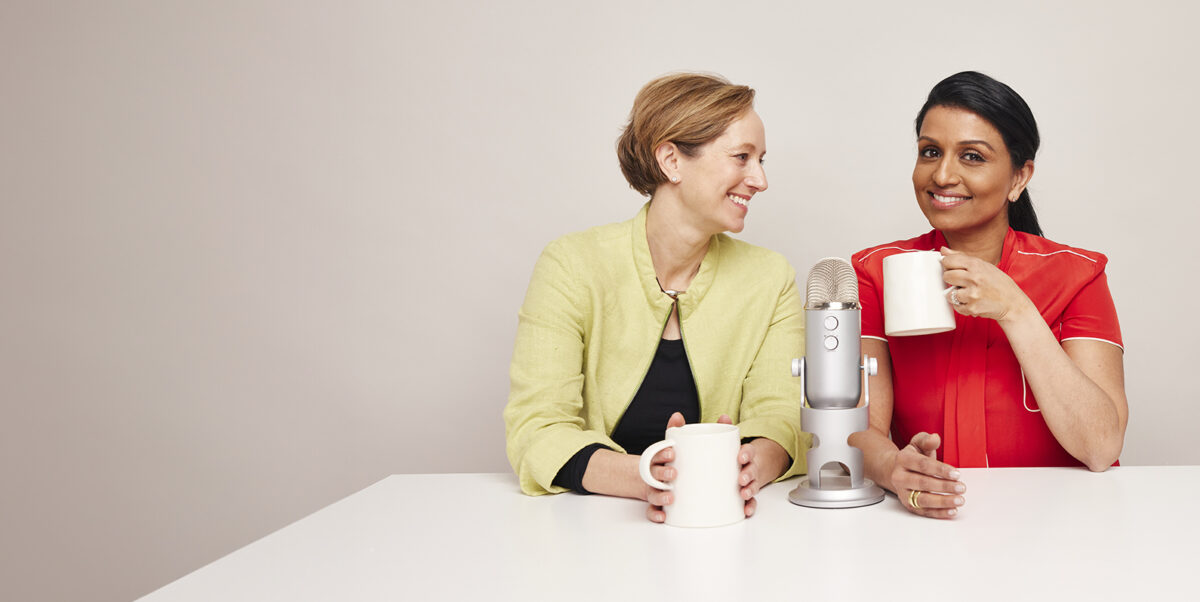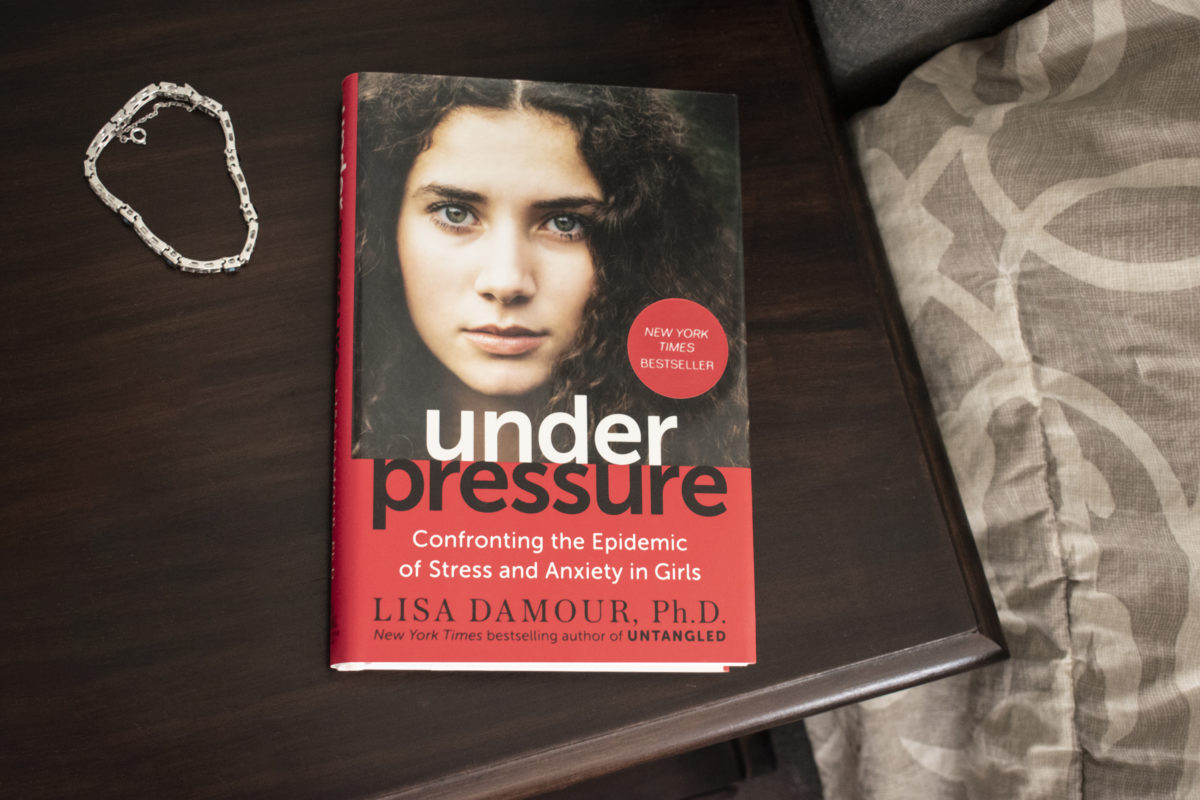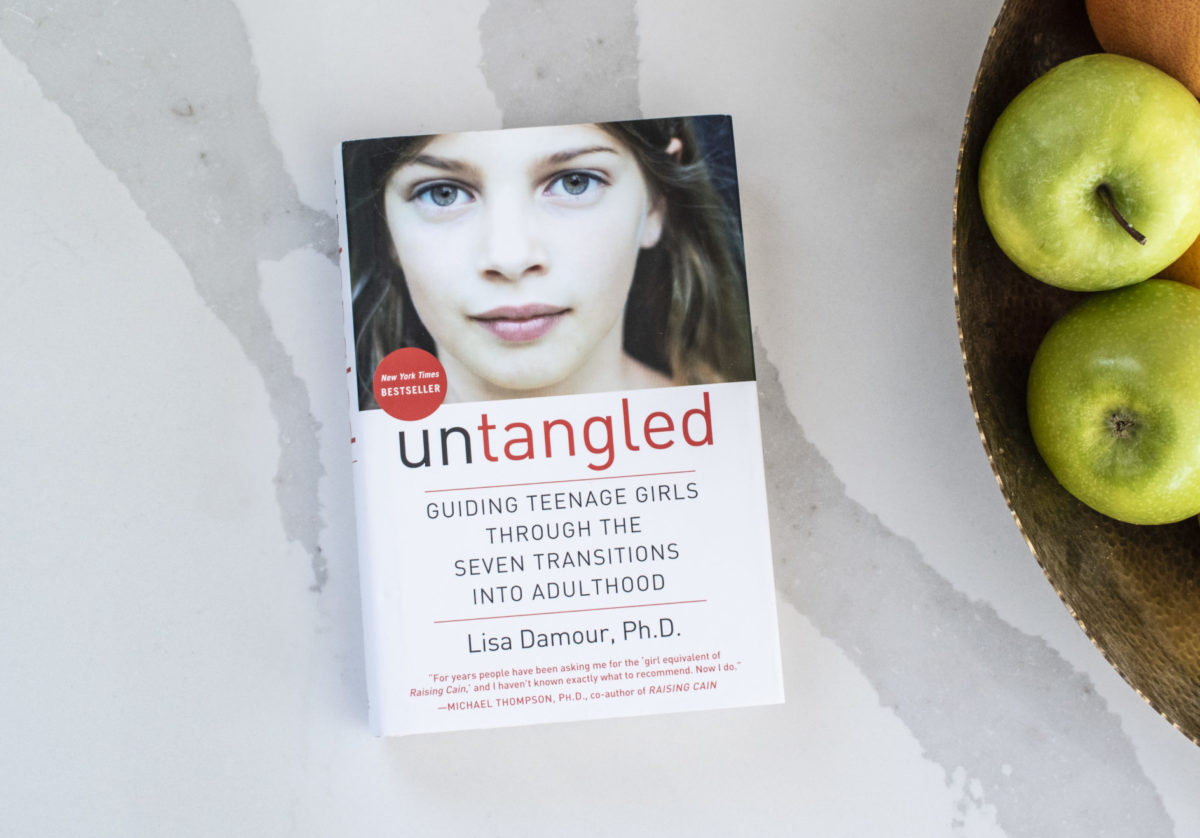Why do young people engage in self-harm? A mother writes in asking for advice on how to respond when her daughter cuts herself. Dr. Lisa unpacks why adolescents sometimes hurt themselves to manage distress and Reena asks about the connection between self-harm and suicide. Using research as a guide, Dr. Lisa explains self-harm, how adults can respond helpfully, and what interventions to consider.
May 9, 2023 | 30 min
Transcript | My Daughter Is Cutting Herself. What Should I Do?
Ask Lisa Podcast, Ep. 118: My Daughter Is Cutting Herself. What Should I Do?
The Ask Lisa Podcast does not constitute medical advice and is not a substitute for professional mental health advice, diagnosis or treatment. If you have concerns about your child’s well-being, consult a physician or mental health professional.
The following transcript has been automatically generated by an AI system and should be used for informational purposes only. We cannot guarantee the accuracy, completeness, or timeliness of the information provided.
——
Reena Ninan
Well, people are gearing up for camps possibly, getting ready for summer plans. What are you? Are you just going to chill out after this book tour?
Lisa Damour
There’s going to be some serious chilling out. No, I I am very glad to say June is looking very quiet on my calendar and I’m ready. I’ve been on the road a lot. It’s been incredible. But I also really like sleeping in my own bed.
Reena Ninan
You deserve it. You deserve it.
Lisa Damour
How about you Reena, you’re gonna get a little time?
Reena Ninan
You know, I just like to have things up in the air always in my life. No summer camps in fact, actually I have three summer camps planned. But that’s it but but sees. That’s it. That’s all I have planned. Your schedule is wide open. My schedule is wide open for fun. Call me good. Yeah. So we got this letter, a pretty serious topic. And it’s interesting because it’s not something I thought about but something you you understand fully. It’s about cutting. I want to read this to you. Dear Dr. Lisa, my teen daughter went to an overnight camp for a week this past summer. There she met someone who had scratches on her leg. When my daughter inquired the girl explain that she cuts her skin as a way to relieve stress. Since then, my daughter decided to try it and continues to sneak away with a sewing needle whenever she feels frustrated. Usually after a major disagreement with myself or my husband, I asked her if she has thoughts about suicide or ending her life. And she says no, she just says it helps her feel better to cut herself. We’ve spoken with her about choosing safer ways to relieve her stress. And she seems to understand and says that she tries breathing and journaling, for example, but she feels like cutting her skin is the most relieving. She’s seen the school counselor who gave us a couple of names of psychologists who can help outside of school. So I’m making calls to get an appointment. Until I find a psychologist I’m writing for advice on how to approach this with her. She says that she understands that cutting isn’t an answer. But can you guarantee that she will stop? Thank you for your empathetic, thoughtful advice. For stuff, I just don’t understand why anybody would think hurting their skin and their body could relieve stress. Can you help me understand that?
Lisa Damour
Yeah, and cutting is something that can strike people is strange or off putting behavior, it’s not altogether rare. It’s certainly something we see more in teenagers than at other times of life. But when we look at the research on this, as many as 17% or more teenagers have tried cutting at one point or another, so sometimes that’s a kid who just, you know, scratches at themselves just to see what it’s like, and then never does it again. And sometimes it’s kids who get more, you know, kind of involved with it. So, I know Reena, that when you hear about it, especially if it’s, you know, not been part of your world, it can feel very strange. But it is fundamentally an attempt at coping. And that, you know, that is so much acknowledged in this letter and the you know, the teenage girl talks about it, that it’s when she’s distressed, it helps her cope, and how it helps kids cope. It can take a lot of different forms, you know, sometimes kids can feel that they’re really angry. And and the way that they can discharge that anger is to turn it against themselves into harm themselves. And then that that gets the anger out, so to speak. But of course they’re getting hurt in the process. Sometimes people who self harm and cuttings one form people sometimes like scratch themselves or burn themselves or bruise themselves. I mean, it’s not always, you know, what’s described in this letter. Sometimes it’s that they feel very, very numb. That that’s something I’ve had people have cared for a report to me that they like that they feel sort of numb and disconnected from themselves. And that hurt hurting themselves can actually bring them back into relationship with their body and give them a sense of sensation and feeling and and they can focus on the physical pain as a way of trying to you know, focus on pain and feel things again. So it can be that the other there’s lots of reasons I’m just giving a few sometimes It’s people are punishing themselves, you know that they feel angry with themselves with that they’ve done something wrong. And so they take it out on their own body. And so there’s lots of ways that it lots of meanings that can have. And I’ve only just touched on a few and and I always try to be very, you know, kind of open to the idea that what it means to one person is not going to be what it means to somebody else, that it serves a lot of purposes and it can be… it can feel effective in serving those purposes.
Reena Ninan
So if this daughter is cutting herself, do you worry that there could be a suicide risk, even though the parent has said she’s asked, and the child has said no?
Lisa Damour
So course right? That’s, it’s, I’m really glad the parent asked, it’s a really critical question that we should ask anytime there’s self harm. And Reena, it’s interesting, we actually do have a pretty developed line of work in my field around what we call an SSRI, non suicidal self injury. Because I think early days, we always sort of lumped self harm together with potential suicide risk. And we have decent evidence that there, that’s not always the case that there are people for whom self harm is quite divorced from any thoughts of suicide or thinking about ending their life. But again, you know, the research is a guide here. And what the research tells us is, if a person continues to self harm over time, the chances that they will attempt suicide start to go up. So there’s no perfect way to say that self harm and suicide or not connected. And for any parent who becomes aware that they are caring for someone in their life, whether it’s a teenager or someone else, where there’s become a kind of routine use or relying on self harm as a way to cope with emotions, the risk of suicide does rise as a person deepens their involvement with self harm.
Reena Ninan
At this point, Lisa, I guess, when you said you wanted to do this episode, and we got this letter? That was so beautiful, what I guess is it common? I mean, when you said 17%? That’s not a low number. That’s almost a fifth of the population.
Lisa Damour
Yeah. And that’s for teenagers. And that’s it, maybe more than that, right? Because, again, we’re, you know, people that don’t always tell us what’s true about this. We also know that boys self harm, actually, we think about at least a third of the population of teenagers who self harm or boys, I think people tend to think about this being a white girl thing, we actually see it across all races, ethnicities, and we do see it across all genders. We see it at higher rates for kids who are sexual and gender minorities, you know, where there’s a lot of stressors that are involved in that. So we do see it. And we do see it more prevalent in some populations than others. And I think there’s value for parents knowing that it is not a completely unusual behavior, because it’s it does it can strike parents, and especially to your kid and their body. And you know, the idea that they would hurt themselves can be so distressing. So it’s, you know, it’s not a good thing, that it’s not rare, but it’s also something I think, that may help parents respond in ways that are more helpful to their kids, if they recognize that this is something that happens sometimes with teenagers.
Reena Ninan
What’s your biggest concern? Now, you know, I’m also thinking about summer camps, like should parents be having conversations about cutting if your child doesn’t know anything about it isn’t into it summer camp, you’re sometimes exposed to other kids that are not in your normal social circle?
Lisa Damour
That’s really important to think through, you know, like, what do we get out in front of and certainly, I could see, you know, people listening to this episode, and this did come up at camp and thinking, Okay, should I get out in front of it? I, my general rule has been around self harm, not to do a whole lot of programming or conversation with kids about it, I don’t really feel there’s a huge amount of value in getting in front of it. But what I do think parents can do and should do with teenagers across the board at any point in the year is clarify the kinds of things that if they hear about them and appear and adults should know. And there’s five things that I always encourage teenagers to like, keep in those lists and you know, keep in mind, number one is self harm. So you can just say self harm, right? You don’t you can sort of say it in a broad way. Like you know, kid who’s not taking good care of themselves is a gentler way to say it so you might say self harm for kids who are in high school age, whereas Reena with your kids who are on the younger side, right, they’re still late elementary and middle school. If you’re sending them to camp and something gets your spidey sense up, you might say to your kids, you You know, if you get there and you feel like there’s a kid who’s not taking good care of themselves, you should let an adult know, that is adequate for, I think middle school and younger kids, because obviously a kid who’s scratching themselves at the needle or cutting their skin, you know, kids can put it together. This is a version of not taking good care of themselves, but you don’t have to move into it. So that self harm is on the list. Let me tell you, the other four kids who are engaged in eating disordered behavior, kids who are depressed, slash suicidal kids who are engaging in very risky behavior, like teenagers do risky things, but then there are teenagers who do things that are so risky that they scare other teenagers, and kids who are in unsafe relationships. So a lot of that can wait until high school. But for parents who are wanting to be out ahead of this, I would have it be part of a broader conversation about the things that they may encounter, or almost certainly will encounter in their peers that they don’t need to feel personally responsible for.
Reena Ninan
Like I said at the beginning of this podcast, Lisa, I was kind of surprised you wanted to do an episode because I just don’t know much about it, which is why I love her episodes, because you’re the expert with three decades of experience. And you you’ve seen it all. But can you just help me understand a little bit more? Why do teens really self harm?
Lisa Damour
So when we look at the patterns that unfold around why kids do this, we do see some pretty distinct patterns. So the first is they are something that happens that makes them upset or uncomfortable. And you know, this letter writer talks about you know, is when there’s a disagreement in the family. So the girl is agitated. So it always starts with distress, you know that kids don’t cut themselves or self harm, if they’re not in distress, then they do it. And there are sort of aftermath effects that can actually be reinforcing that can actually make them want to do it again. So one is they may feel relief or may they may no longer feel numb, or, you know, they may feel, you know, sufficiently punished for whatever bad thing they felt they did. Another thing that can happen is they may get care, right? I mean, I sort of think about this dynamic unfolding in the home where the family has a fight and then the girl is very upset and then she goes and cuts herself and then she’s injured. That really changes the dynamic right? Of course any loving parent is going to be attentive and concerned and worried about that. And that is the right thing to do. But it also may, you know there’s we’ve got some research showing that that shift towards you know, sort of more tender attention can actually be reentered. We’re saying that it’s it feels good to have people be loving and attentive with you. Which isn’t to say parents shouldn’t do it. But it is just thinking about the patterns that can help keep this going or that need to be addressed when we’re trying to change it. The other thing I have seen, in one young woman I cared for who would engage in cutting is that she would feel very, very numb, she would cut and the sensation was a pure like, gave her a sense of feeling more real, more, you know, alive is the language you would use. And then she would, she kept a very, very secret, she didn’t actually tell anyone she was doing it. She was in care for the wounds with like incredible diligence, that there was something for her really powerful about tending to herself, I think in the way that she wishes her family would have tended to her, you know, she would clean them, and she would put Neosporin on them, and she would bind them up very well. And they would heal really well. And I think for her, that became a very powerful reinforcing cycle of like I’m in pain, or I feel nothing, I then can release the pain through something physical, then I can care for myself in the way I longed to be cared for. And it can take on a life of its own, right. And that’s what we work to help prevent. There’s another line of research, I just want to touch on here, because it’s really important. It’s about body objectification, that one of the things and this is maybe why we see more of this in girls, is that we see a range in terms of how much young people and I’m sure people have older ages, but certainly we look at this and teenagers view their body as an object view, their body is something that is really not entirely theirs, it’s for other people’s, you know, pleasure or other people’s, you know, getting to look at or evaluate. And so we have some research showing that for young people who are very, very high on measures of body objectification, who tell us that they see their body as an object that is not entirely theirs, it doesn’t feel integrated for them, their likelihood of they’re more likely to engage in cutting. And then especially if they don’t like their body, right? I mean, because there also can be this, like, I don’t even like my body, and then I’m going to harm my body. So again, what it means is so different person to person. And we do want to help people not engage in cutting, because of course, they’re getting hurt in the process. And we have ways that we approach it and think about it. But for me, there’s such value. And I’m so grateful for your willingness to take a deep dive into this, because what we need is empathy, right? If we’re going to take good care of people, we need empathy, and really being attentive to the various reasons that this may be. In some ways, working for the people who choose to do it, I think helps us to really have the empathy on board that we need to then take very good care of them.
Reena Ninan
Yeah, empathy is just so important. But it sounds like it could be a vicious cycle, if a parent is wanting to care, obviously for the wounds and smother a child with attention and affection and the child sees how they’re being rewarded. What is really the appropriate way for a parent to respond to cutting?
Lisa Damour
That is right. That’s the challenge because of course you want to attend to this. And then we do have some research showing that there that attention can can feel good, which of course it does. So what I would say is, if a parent is, you know, comes across this and obviously is concerned at first do exactly what this parent did check for suicidality and get on the call, get yourself lined up with a clinician, like I think that those are both good ideas. Certainly the suicide checking for suicide being imperative. I think the next thing I would say is something along the lines of like, okay, if you know if I’m the parent, I’m talking to my teenager, I think I’ll say look, you we can talk about this you can explain to me why you’re doing this, but here’s what I know you’re coping with something, right? You’re doing this because it works for you. And I am all for you coping for distress. We need to find a way for you to cope that you’re not getting hurt. And really put the emphasis there and put the attention there. Let us find a way for you to cope where you’re not getting hurt. And then so don’t push it away. Don’t dismiss it don’t shame the child. really settle in for a conversation about what are the other things when you are feeling whatever you feel that causes you to cut what else could help you feel better?
Reena Ninan
Does therapy make sense? If your child is cutting I mean what should you do? This mom here said the school gave her some psychologist you always say the school sometimes it’s a good way to start if you want resources. But is therapy the right way? How do you tell what you need?
Lisa Damour
So we do have therapies that really do work for non suicidal self injury we’ve researched it and there’s a couple that we strongly recommend. One we actually talked about in our episode, actually, we talked about both of these in our episode on what kind of therapy is right for my kids. So one is Dialectical Behavioral Therapy, which we talked about in that episode was developed for the treatment of borderline personality disorder, but is turned out to have a lot of uses. Cutting is something that is not unusual in borderline personality disorder. But you can see cutting without that disorder, I think that’s an important thing to emphasize. But what dialectical behavioral therapy does is that it helps with coping with distress, it helps people have strategies for managing upset feelings that do not involve harm to anyone. And, and so it’s very targeted, it’s very appropriate for the treatment of cutting. And so I would say, if a parent is feeling like the cutting is not, the kid is not able to stop it on their own, that kid is not able to switch gears into an adaptive form of coping, I would definitely consider DBT, or cognitive behavioral therapy can also be helpful, but DBT is more targeted towards just this kind of difficulty with regulating emotions.
Reena Ninan
How do you get into this kind of therapy? Is it hard? Are there therapy deserts, you know, across the country, or where you can’t get into it? What’s your advice for people looking to find some of this help?
Lisa Damour
It can be hard, right. And certainly DBT is a specialized form. And so then you need special training in it. The good news is it’s got much, much more traction than it ever used to. And often, there are clinicians who are running DBT groups or you know, that there’s, there’s stuff available in communities. Pediatricians also can be very aware of the various clinicians in the community who can be of help for any given challenge. And there’s also some online DBT programs. But again, I would see if your pediatrician can vet it for you, because the online universe, you know, you don’t entirely know what you’re getting. And there’s some actually really good workbooks. And we’ll put them in the in the show notes about asset regulation. So even if a parent can get in with a clinician right away, there are things that parents can do between, you know, when they discover that there’s a problem, and when they’re able to get professional help. And what so we’ll make those resources available as well.
Reena Ninan
That’s terrific. You know, a lot of these topics we bring up, sometimes it might not be your child, but it could be one of your child’s friends or somebody in your community. And you mentioned empathy and the importance of that. It’s one of the reason I thought it was so important to talk about this episode, you might not think it’s your child or whatever be. And maybe it unfortunately, does end up being but what do you think people need to keep in mind, if they come across a child who is cutting? What’s important to know?
Lisa Damour
It’s working for them. One way or another, it’s working people don’t do things that don’t work for them. And so the more that we can walk up to this from the standpoint of thinking, what purpose is this serving? How is this working well, for you? Okay, what could we put in place that would work as well for you, but where you’re not getting hurt? I think that’s the key. And we know there’s something else I want to bring up. And this is controversial in the field. But I want parents to be aware of this. Another thing that is sometimes offered is basically what we call a harm reduction technique. And this is where if a young person says like, I have to have this sensation, like I have to feel something in order to get the emotional relief. There are some clinicians who will recommend, okay, get a rubber band and snap it against your wrist to get that stinging sensation of it hitting your wrist, or even holding cubes of ice, you know, holding as quickly becomes painful. And it’s actually one of the ways when we’re in research settings wanting to measure people’s pain response, we actually just have them put their hands and arms and very ice cold water because it just it quickly gives a very painful sensation, but it’s a safe thing to do. So there’s a little bit there’s controversy, some people feel like harm reduction can be problematic if a person tries it and it gives them no relief, they can then feel like nothing else is going to work but the cutting so it can have that potential downside. But I also know clinicians I really respect and trust, who will say look, if if you feel like breathing isn’t working and journaling isn’t working and you know, it’s going to take a while for us to get you with a therapist. If you could switch from cutting to just holding ice to get that painful sensation, then at least you’re not getting hurt in the process. So I want parents to have that as a as an in between measure as a half step option to consider while knowing that if it doesn’t go well sometimes kids can feel really frustrated that nothing is going to take the place of cutting.
Reena Ninan
You’ve explained it all so well and laid it out in this podcast but I just, I just still don’t get it. I just don’t understand why any child would feel better hurting themselves by cutting.
Lisa Damour
I hear you, Reena. And what I would say is adolescent emotions are really powerful. And they can be very destabilizing for kids. And I don’t mean kids who are already suffering from psychological diagnosis, I mean, just teenagers, that they can feel overwhelmed by what’s going on around them, they can feel unmoored from themselves. And they can sometimes do something really impulsive. You know, they may have heard of cutting, they may have heard that, like, you know, it can give some relief. And it’s easy enough for me to picture a young person who’s never tried it before, having a really bad day, feeling incredibly frustrated and distressed, needing to get past it like feeling like they’ve got a whole bunch of homework that they need to get to. And sort of randomly like giving it a try to see what happens. And in my experience, some kids, they’re like, Oh, I tried it, and it freaked me out. And I’m not doing that, again. That happens. And I think for those kids, if they don’t do it again, they’re probably I wouldn’t be too worried, right, I would assume they sort of fixed it or solve that on their own. And other kids try it. And they’re like, oh, oh, that actually brings a relief or focuses my pain in one place that I can now address it there and take care of it. And now I can get back to all the other stuff I mean to be doing. So it can have a very powerfully reinforcing quality. And kids can sometimes stumble on that or they can seek it out more deliberately. But again, if it’s not something that would ever be in the universe of what you would do, and I anything for a lot of us that that is how we feel like like that, you know, that’s not going to be someplace I would ever go, I think then all the more reason to really bear in mind that it makes a sense of its own, even though we always want to try to find other ways for people to cope. Because Reena in in all my time practicing, I will tell you, the two most toxic emotions I have ever come across are helplessness and shame. People hate people feeling helpless. And I think sometimes added maybe what is underlies the impulse to cut, right, I’m taking control of the situation, I’m gonna get myself to a different place on my own. And there’s a lot of shame around cutting, and shame never makes things better. So the more that we as loving adults who surround teenagers can steer clear of shame, especially around things like this, which can have a very powerful shaming valence to them, the more useful we’ll be.
Reena Ninan
Great advice, and again, pointing us into directions that we never sort of really understood. So thank you for that, Lisa. What do you have for us for Parenting to Go?
Lisa Damour
You know, I think the key in this is not to be afraid of distress, not for the adults to be afraid not for the young people to be afraid. You know that so much of what my most recent book they emotionalize it teenagers is about is that distress is part of life, it is inevitable. We can’t prevent it, we can’t avoid it. What we can do is cope with it really, really effectively. And so if we think about cutting as a coping problem, not as a distress problem, then you know, the options open up focusing on healthy coping, whether it’s expressing emotions or taming emotions. And of course, if something is causing tremendous distress that can be changed, we would like to change that. But let’s always keep our eye on the right. Topic. distress is a done deal is part of life. It’s part of being a teenager, for sure. It’s how kids cope and wanting them to cope in ways that bring relief but do no harm.
Reena Ninan
Wow, heavy topic. But what a great reminder about distress. And one of my favorite things about your book is reminding everyone that you don’t always need to be up. In fact, it’s not being up all the time that we need to be achieving and working through and pushing through those tough moments is so important. Absolutely. Thank you, Lisa. I want to just remind everyone, next week we’re going to talk about how do you get your child to stop picking on the other sibling and important topic. Parents all know for our and wide is a thank you. I’ll see you next week.
Lisa Damour
I’ll see you next week.
More resources
















